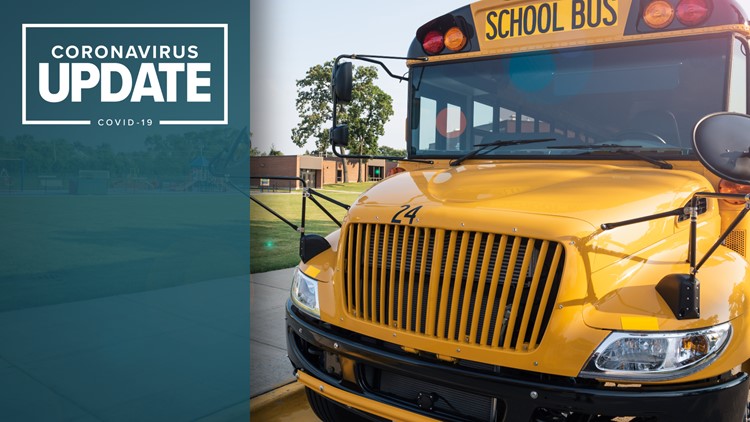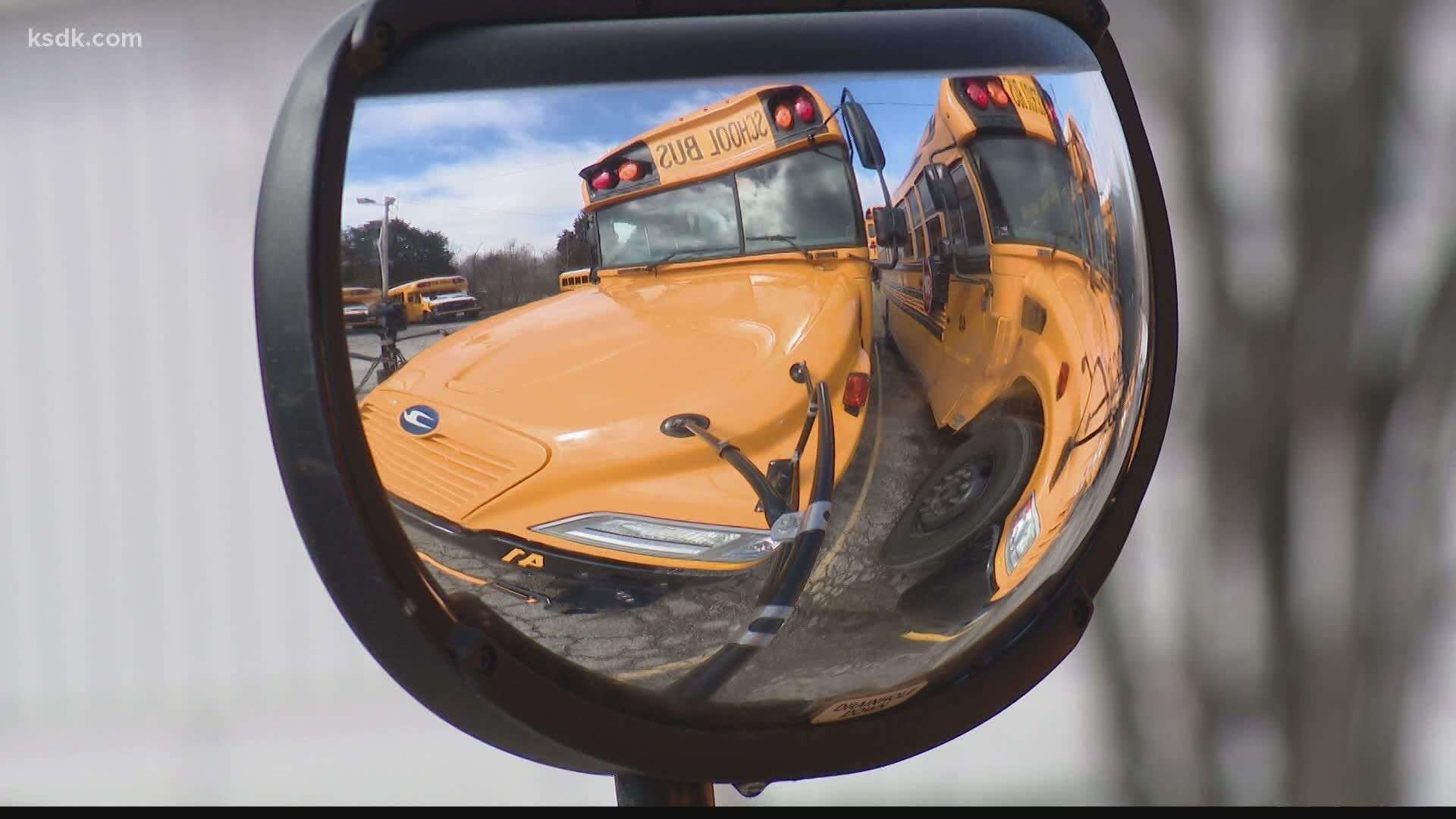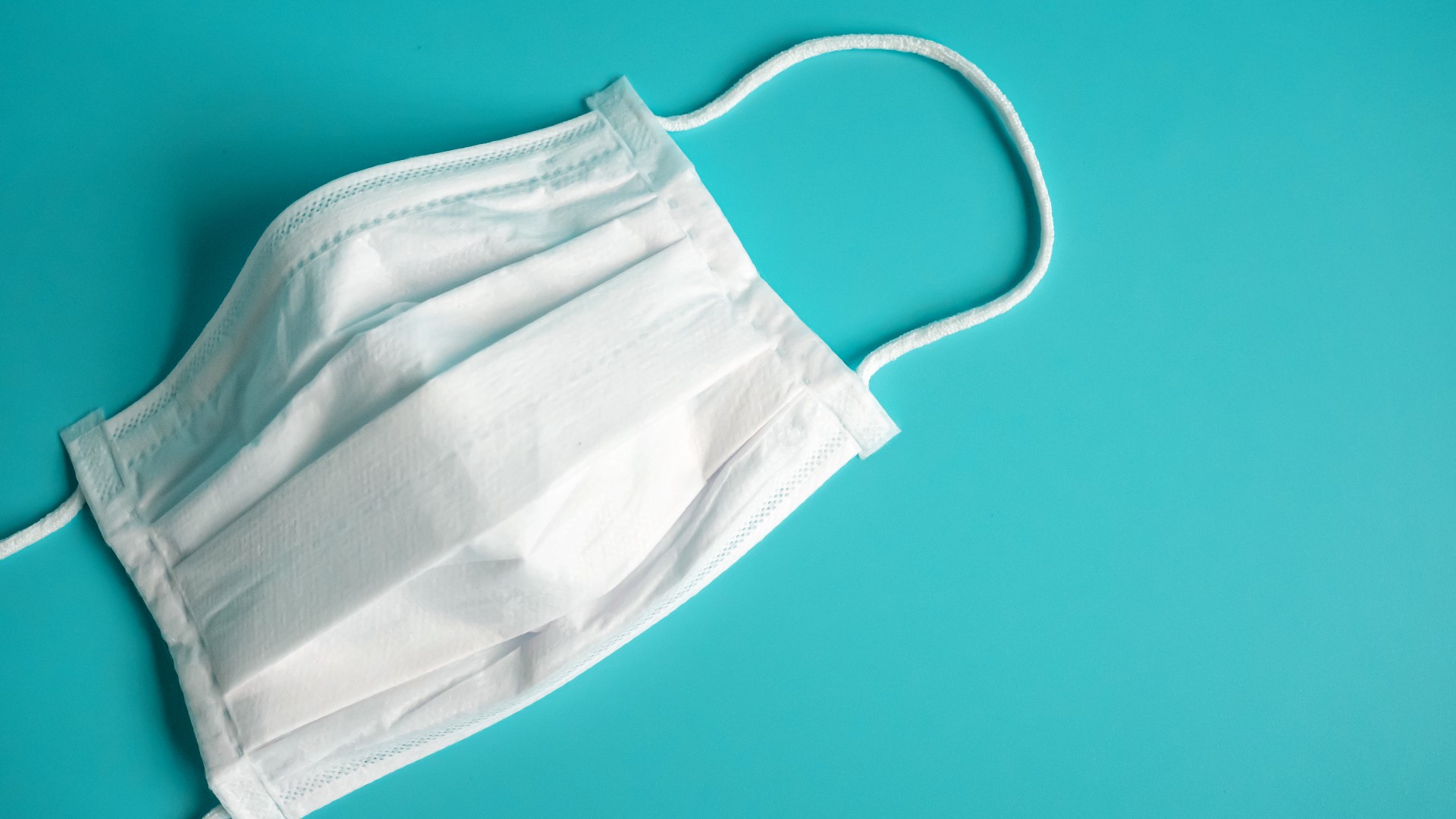JEFFERSON CITY, Mo. — Missouri is offering guidance to schools across the state as they make plans to return to in-person learning.
There are no statewide health mandates for K-12 schools to follow as they reopen but the health department has provided some strategies that Missouri schools can implement to help reduce the spread of COVID-19.
The Department of Health and Senior Services and Department of Elementary and Secondary Education has come up with a list of frequently asked questions to help schools prepare for reopening.
Screening
How should K-12 schools screen students for COVID-19?
K-12 schools should use a process for daily screening for symptoms of and exposure to COVID-19 and parents should also screen children at home.
Parents should also be provided with a checklist that includes these symptoms:
- Fever or chills
- Cough
- Headache
- Muscle aches
- Nausea, vomiting or diarrhea
- New loss of taste or smell
- New runny nose or congestion
- Shortness of breath or difficulty breathing
- Sore throat
- Close contact with a person with COVID-19 in the last 14 days
Students with symptoms should not attend school and parents should consult their health care provider and follow CDC guidelines regarding returning to school.
For students who test positive for the virus, return to school is permissible when the student is at least 10 days from symptom onset, has had three days with no fever and has improving symptoms.
Students with known close contact with COVID-19 should stay home for 14 days from their last contact and until return to school is approved by the local health department.
Schools should “broadly communicate” the importance of keeping students home when they feel sick.
Should schools screen students for COVID-19 onsite?
Students should be visually inspected for symptoms of the virus as they enter the school.
School leaders may choose to perform additional symptom or temperature screening at school but should ensure students can maintain a safe social distance during those procedures.
How should K-12 schools screen staff members for COVID-19?
School staff members should self-screen at home, following the same protocol for families screening students at home. Schools should also screen staff members as they enter the building each day and that screening should include a temperature check.
How should K-12 schools screen visitors for COVID-19?
Schools should limit visitors inside the building. Schools should look into conducting meetings with families remotely (conference call) so parents can continue to engage with teachers.
If visitors are unable to join a remote meeting, schools should screen the visitor for the virus and then limit the visitor’s movement throughout the building.
Schools may also consider a designated visitor space where social distancing measures are enforced. A record of visitors in the building should be kept.
Physical Distancing
What physical distancing measures should K-12 schools have in place to protect against the spread of COVID-19?
Schools should assign students to cohorts and limit their exposure to other cohorts within the building – meaning students should stay with the same group throughout the day.
If classes need to rotate, schools should consider rotating teachers instead of moving groups of students throughout the building.
Schools should implement assigned seating and keep records of seating charts to help identify close contacts if a member of the school is diagnosed with the virus.
Cohorting may not be feasible for middle and high school students so assigned seating is encouraged.
Other physical distancing measures:
- Students should be spaced as far apart as possible.
- Six feet apart is best; when that’s not possible, schools should make efforts to ensure a minimum of 3 feet of space between students.
- Desks should be placed facing forward in the same direction so students do not sit face-to-face.
- Schools should place physical distancing markers and cues throughout the building
- Schools should require hand hygiene before and after students move from one space to another within the building
How should physical distancing take place on a school bus?
School bus transportation may not allow for social distancing but here are some strategies to reduce contact on buses:
- Screening of COVID-19 symptoms at home prior to getting on the bus.
- Encouraging hand hygiene upon boarding the bus.
- Assigning students to seats so contacts are stable.
- Seating siblings together.
- Loading the bus from back to front.
- Encouraging the use of face masks during transport.
- Having windows open when safe and weather-permitting.
- Providing bus drivers and monitors onboard with personal protective equipment, such as face masks and face shields and/or eye protection, as long as these do not impair driving.
- Installing physical barriers such as Plexiglass between the driver and students, if feasible.
Schools may also ask families who are able to take their children to and from school or arrange for carpools to reduce the number of students riding buses.
How should physical distancing take place during meal times?
Keep students in cohorts during mealtimes and have students eat in their classrooms instead of moving throughout the building. Schools may consider bringing meals directly to classrooms but should make efforts to ensure nutritional value and appealing menu choices are not sacrificed.
For older students, multiple separate lunch periods may be created and alternate locations, like outdoors or large indoor spaces, may be used for lunches.
How should physical distancing take place during recess and physical education?
Students should engage in physical activities with their primary cohorts (groups) to reduce the number of contacts. Multiple cohorts could have recess at the same time, as long as they are playing in separate areas of the playground.
Individual equipment used during recess could be separated by cohort to reduce the need for disinfecting between uses but if that’s not possible – individual equipment should be cleaned between uses.
Stationary playground equipment doesn’t need to be cleaned with the exception of handrails and other high touch surfaces, which should be cleaned in accordance with CDC guidelines.
Schools should require hand hygiene before and after recess and physical education.
Are there other creative ways schools can arrange for physical distancing?
Large spaces, like multi-purpose rooms and auditoriums, could be marked and utilized to account for appropriate physical distancing. Schools may also consider using outdoor learning spaces more often.
How should physical distancing take place during music class, given the conversation around the higher rate of COVID-19 transmission during singing?
When considering music classes, schools should ensure students remain in cohorts (groups) and are maintaining social distancing. Holding these classes outdoors would be a safe alternative.
When classes are not able to social distance, schools could consider alternative classes such as virtual instruction, music technology, music theory and music appreciation.
Masks/Face Coverings
Should K-12 students and staff wear face coverings?
Face coverings are important in reducing the spread of the virus. Young children may have difficulty complying with the proper use of face coverings and may have increased face touching, mask chewing, mask trading and other behaviors that could increase the risk of infection.
For those reasons, continuous usage of face covering is not recommended for young children.
Older children, such as those in middle and high school, are encouraged to wear face coverings during periods when students are not in cohorts (groups) or can’t maintain a safe social distance. Students are also encouraged to wear face coverings while on the school bus.
Schools should also consider how to deliver training to students on the safe and proper use of masks.
Should K-12 staff members wear face coverings?
It is recommended that school leaders require school staff members to wear face coverings. Face coverings should be worn by staff members at all times when they are in close proximity to students or other staff members.
In lecture formats where the teacher is stationary and appropriately distanced from students, face coverings may not be necessary. In situations when working with young or deaf children and the need to convey facial expressions and mouth movements is important, the use of a clear face shield is preferred to no face covering at all.
Bus drivers and monitors onboard a school bus should wear personal protective equipment.
Any teacher or staff member working closely with symptomatic children must wear medical-grade masks and eye protections to ensure that staff are protected.
Click here for a look at the frequently asked questions page provided by DHSS and DESE. It will be updated as the departments receive more questions.
More Coronavirus Coverage
- 'At what cost?' | St. Louis area teachers weigh in on reopening plans during COVID-19 pandemic
- Missouri school districts can choose mix of online, in-school classes
- Here's how to report mask violations in St. Louis and St. Louis County
- How contact tracers are following COVID-19 cases in St. Louis County
- COVID-19 outbreak closes Montgomery County, Illinois church
- Dealing with new plans as back-to-school fast approaches




